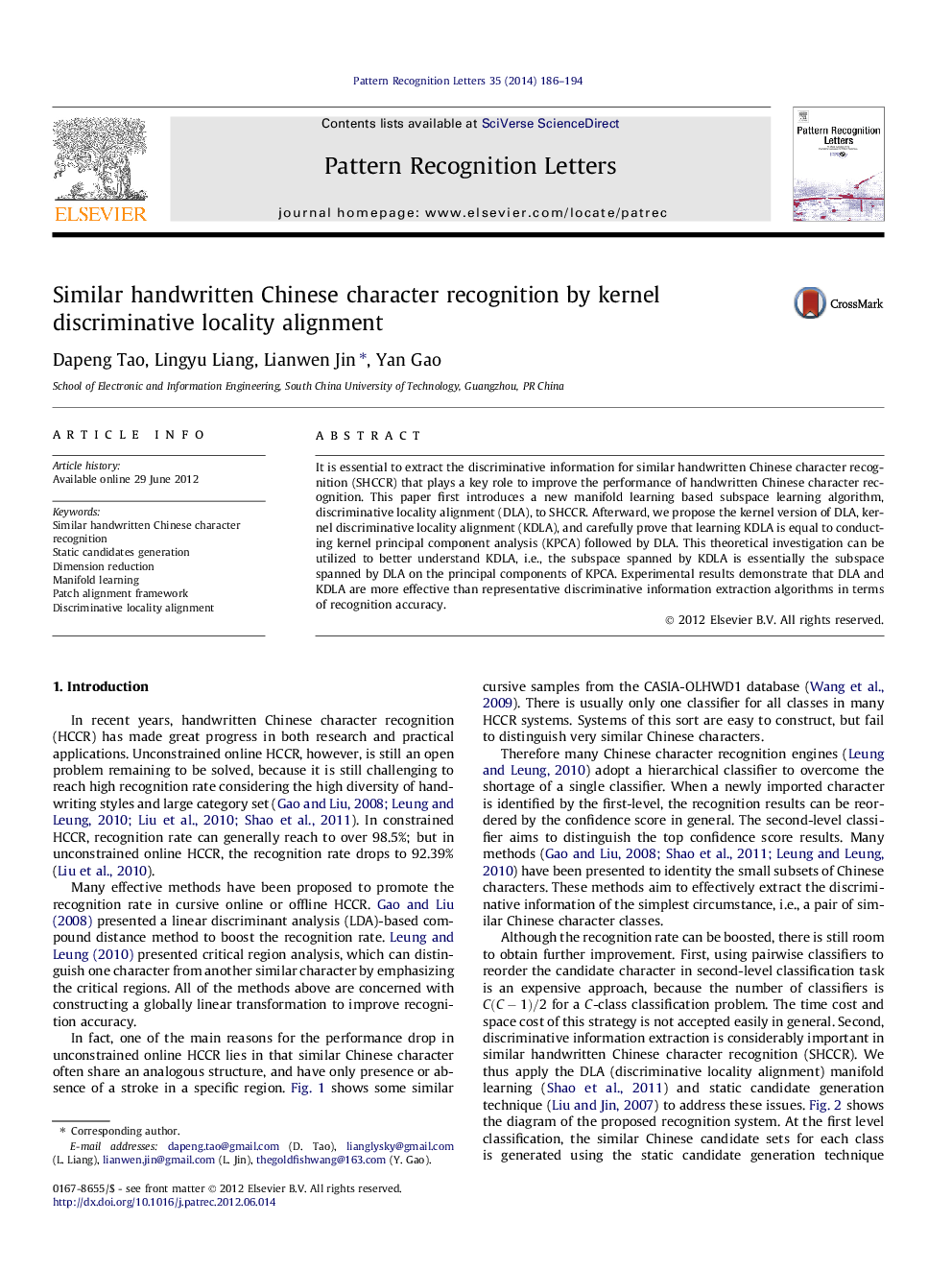| Article ID | Journal | Published Year | Pages | File Type |
|---|---|---|---|---|
| 536380 | Pattern Recognition Letters | 2014 | 9 Pages |
It is essential to extract the discriminative information for similar handwritten Chinese character recognition (SHCCR) that plays a key role to improve the performance of handwritten Chinese character recognition. This paper first introduces a new manifold learning based subspace learning algorithm, discriminative locality alignment (DLA), to SHCCR. Afterward, we propose the kernel version of DLA, kernel discriminative locality alignment (KDLA), and carefully prove that learning KDLA is equal to conducting kernel principal component analysis (KPCA) followed by DLA. This theoretical investigation can be utilized to better understand KDLA, i.e., the subspace spanned by KDLA is essentially the subspace spanned by DLA on the principal components of KPCA. Experimental results demonstrate that DLA and KDLA are more effective than representative discriminative information extraction algorithms in terms of recognition accuracy.
► We introduce discriminative locality alignment to similar handwritten Chinese character recognition. ► We propose the kernel version of DLA, kernel discriminative locality alignment (KDLA). ► We prove that learning KDLA is equal to conducting kernel principal component analysis followed by DLA. ► Experimental results demonstrate that DLA and KDLA are more effective.
